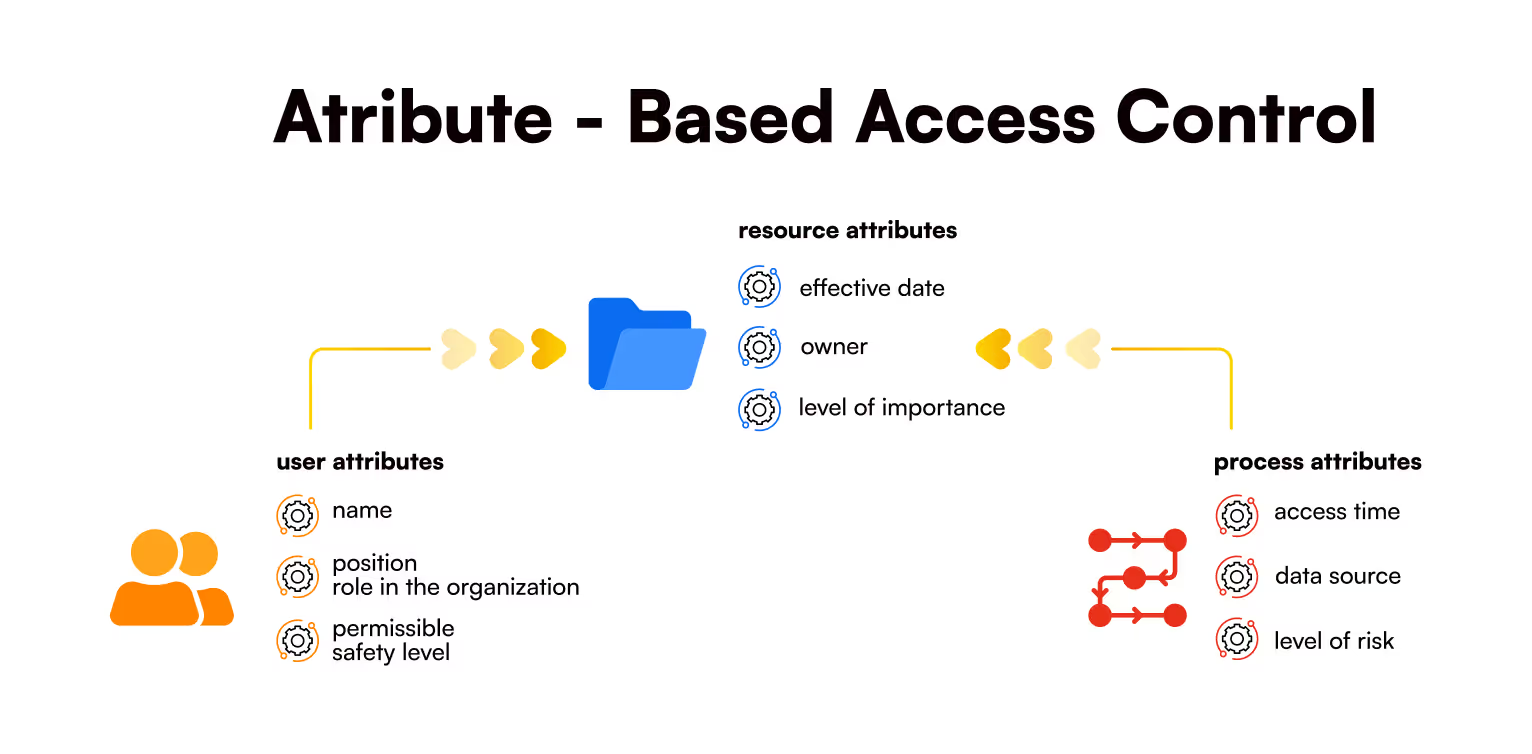In the corporate market, robust authorization policies, especially in multi-entity, geographically dispersed corporate structures, are the order of the day. A good example is insurance companies that provide property and life insurance in separate entities. When implementing an application for such organizations, the challenge is to build a solution in a single business model that considers the requirements of multi-entity, diverse complex structures, and a high level of security. That is why we have implemented an attribute-based authorization model – ABAC (Attribute-Based Access Control) – in our low-code platform.
At Meltemee low code platform, access control is based on attributes – a set of characteristics assigned to a user, process, and resources:
- User attributes include, for example, username, role in the organization, place in the organizational structure, ID, and security permissions.
- Process attributes include access time, data location, and protection levels within the organization.
- Resource attributes include, for example, creation date, resource owner, file name, and data confidentiality.
In essence, ABAC has a much larger number of possible control variables than the role-based system often found in competing solutions – RBAC (Role Based Access Control). ABAC reduces the risk of unauthorized access because it can control security and access based on attributes: in the context of a case, process step, user permission level, resource importance level, decision, etc. RBAC, on the other hand, grants access based on the role performed: manager, employee, administrator, etc.

For example, in an HR role, instead of providing unlimited access to employees and salary information, ABAC can — in accordance with your organization's policy — impose additional restrictions, such as allowing access only during certain hours or only in selected branches relevant to the employee. The ABAC authorization mechanism in our low-code platform enables the implementation of comprehensive authorization policies, improves the security of resources and processes, and can also assist in security audits.
Choose the security of the Meltemee low-code platform
One of the low-code applications on the Meltemee platform that uses ABAC mechanisms is MES.pro. The application is designed for manufacturing companies.
The application is intended for manufacturing companies.
- It controls product quality on an ongoing basis, shortening batch release times and reducing production and laboratory costs.
- It calculates OEE indicators.
- It monitors the production process at all stages on an ongoing basis.
- It supports maintenance management.
- It reduces costly laboratory tests by replacing them with data processing collected directly from sensors and production line controllers, providing users with up-to-date information, calculation results, analyses, and recommendations.
The application supports the possibility of designing and updating the digital plant model (Digital Twins) by the customer's employees. By implementing MES.pro, the customer receives a solution that at any time using the Meltemee graphical environment can be updated and adapted to the production process changes, new controllers and sensors installed on production lines, and new user requirements.
- using the Meltemee graphical environment
- can update and adjust to:
- the current production process,
- controllers and sensors installed in production lines
- user expectations.




